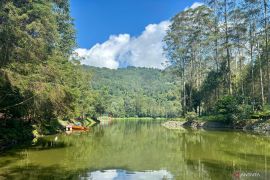Waib Budi Lestari, a BMKG analyst, said here Wednesday whirlwinds always occur in flat areas where there was no vegetation.
"That is why, it is important to plant big trees or other kinds of vegetation in open spaces, especially in urban areas, if we want to remain free of whirlwinds," Warih said.
According to Warih, whirlwinds occur as a result of a process in which an increase in temperature creates a change of pressure in the air, especially in period between morning and late afternoon.
The increase in local temperature leads to the formation of rain clouds that fuel the growth of cumulonimbus clouds (Cb) which can result in a local whirlwind, Warih said.
Cb clouds are tall in shape like a spear with a crown resembling a cauliflower with a dark center.
"A Cb cloud then moves in a swirling way in a particular area, and this is what we call a whirlwind," Warih said.
A whirlwind was a rotating wind that can reach speeds of 60-90 kilometers per hour and last for 5-30 minutes.
The theory was based on a recent environmentalist from the University of Riau (UR) Tengku Amri Ariful who previously stated that in order to counteract the whirlwind`s brunt that hit most parts of the country including the province of Riau, is by conducting a massive reforestation.
"We all know that the current weather conditions everywhere are very difficult to predict. The rainy season should last until the end of February but in reality there has been little rain since mid-January 2012," said Ariful.(*)
A050/HAJM/B003
Editor: Jafar M Sidik
Copyright © ANTARA 2012










